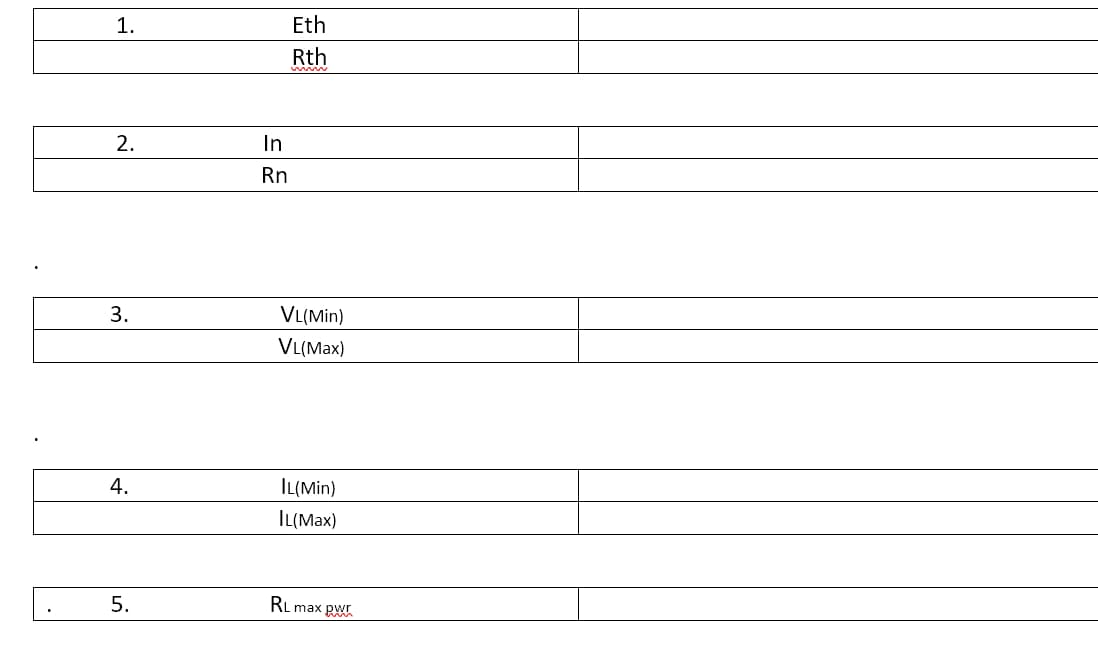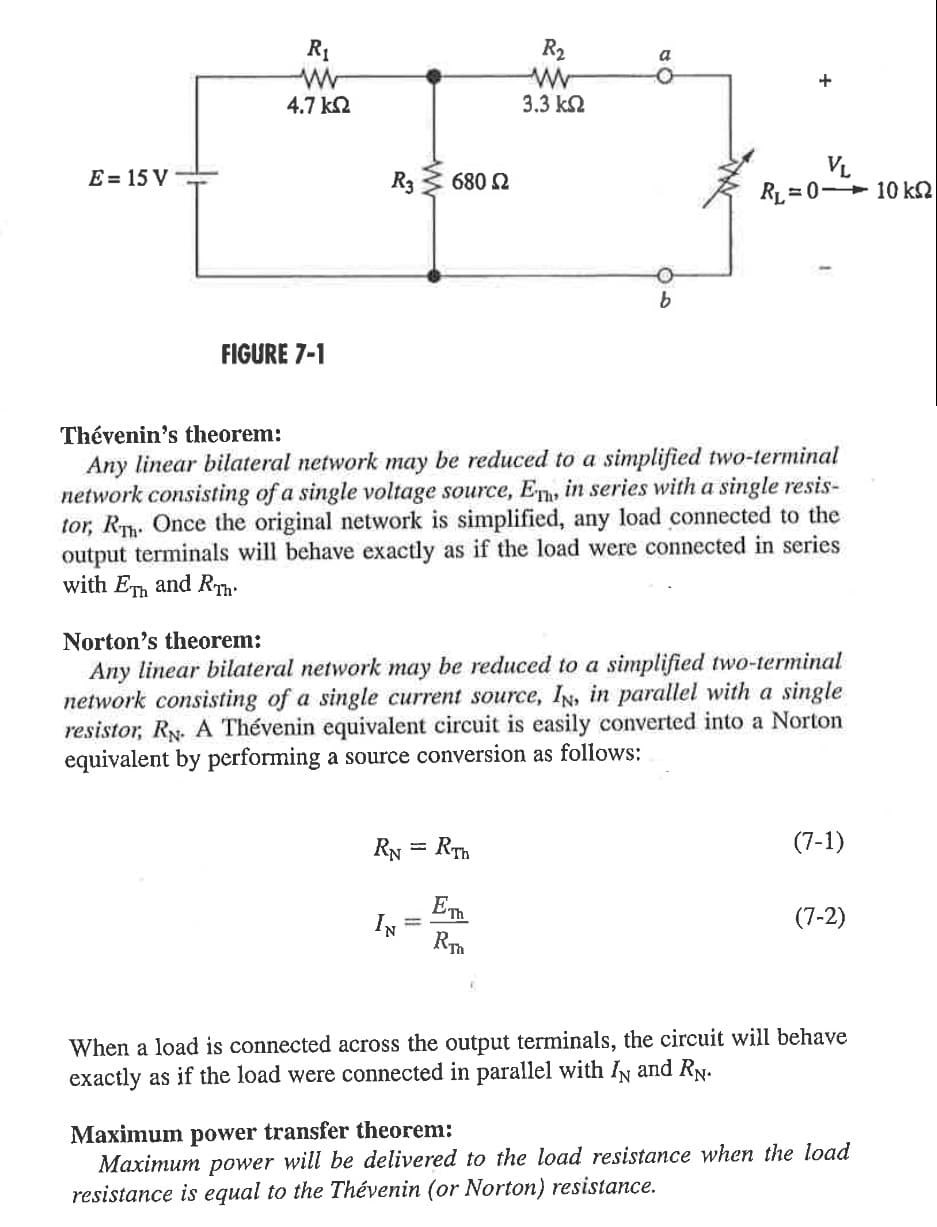1. 2. 3. 4. 5. In Rn Eth Rth VL(Min) VL(Max) IL(Min) IL(Max) R₁ max pwr
1. 2. 3. 4. 5. In Rn Eth Rth VL(Min) VL(Max) IL(Min) IL(Max) R₁ max pwr
Electricity for Refrigeration, Heating, and Air Conditioning (MindTap Course List)
10th Edition
ISBN:9781337399128
Author:Russell E. Smith
Publisher:Russell E. Smith
Chapter17: Commercial And Industrial Air-conditioning Control Systems
Section: Chapter Questions
Problem 22RQ
Related questions
Question
I have included the circuit in question as well as the questions/data table, thanks.

Transcribed Image Text:1.
2.
3.
4.
5.
In
Rn
Eth
Rth
wwww
VL(Min)
VL(Max)
IL(Min)
IL(Max)
RL max pwr

Transcribed Image Text:E = 15 V
R₁
W
4.7 ΚΩ
FIGURE 7-1
R3
680 Ω
RN = RTh
Emh
IN
R₂
ww
3.3 ΚΩ
a
RTh
b
Thévenin's theorem:
Any linear bilateral network may be reduced to a simplified two-terminal
network consisting of a single voltage source, Eh, in series with a single resis-
tor, Rh. Once the original network is simplified, any load connected to the
output terminals will behave exactly as if the load were connected in series
with FTh and RT
+
Norton's theorem:
Any linear bilateral network may be reduced to a simplified two-terminal
network consisting of a single current source, IN, in parallel with a single
resistor, RN. A Thévenin equivalent circuit is easily converted into a Norton
equivalent by performing a source conversion as follows:
VL
RL=0 10 k
(7-1)
(7-2)
When a load is connected across the output terminals, the circuit will behave
exactly as if the load were connected in parallel with IN and RN.
Maximum power transfer theorem:
Maximum power will be delivered to the load resistance when the load
resistance is equal to the Thévenin (or Norton) resistance.
Expert Solution
This question has been solved!
Explore an expertly crafted, step-by-step solution for a thorough understanding of key concepts.
Step 1: Summarize the data.
VIEWStep 2: 1. Determine E_th.
VIEWStep 3: Determine R_th.
VIEWStep 4: 2. Determine the Norton's equivalent circuit.
VIEWStep 5: 3. Determine V_L(min) and V_L(max).
VIEWStep 6: 4. Determine I_L(min) and I_L(max).
VIEWStep 7: 5. Determine the value of R_L so that maximum power transferred to it and P_max.
VIEWSolution
VIEWStep by step
Solved in 8 steps with 7 images

Knowledge Booster
Learn more about
Need a deep-dive on the concept behind this application? Look no further. Learn more about this topic, electrical-engineering and related others by exploring similar questions and additional content below.Recommended textbooks for you

Electricity for Refrigeration, Heating, and Air C…
Mechanical Engineering
ISBN:
9781337399128
Author:
Russell E. Smith
Publisher:
Cengage Learning

Power System Analysis and Design (MindTap Course …
Electrical Engineering
ISBN:
9781305632134
Author:
J. Duncan Glover, Thomas Overbye, Mulukutla S. Sarma
Publisher:
Cengage Learning

Electricity for Refrigeration, Heating, and Air C…
Mechanical Engineering
ISBN:
9781337399128
Author:
Russell E. Smith
Publisher:
Cengage Learning

Power System Analysis and Design (MindTap Course …
Electrical Engineering
ISBN:
9781305632134
Author:
J. Duncan Glover, Thomas Overbye, Mulukutla S. Sarma
Publisher:
Cengage Learning